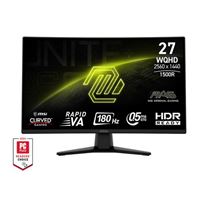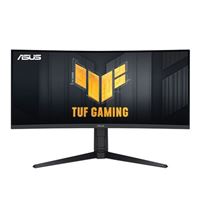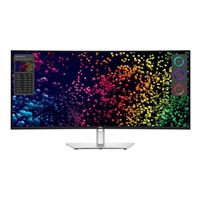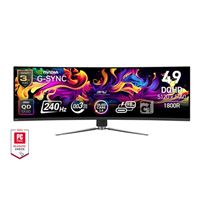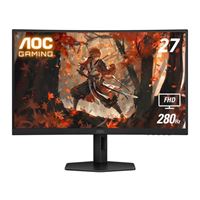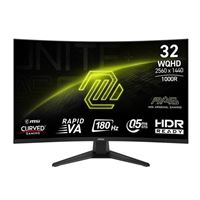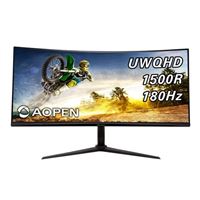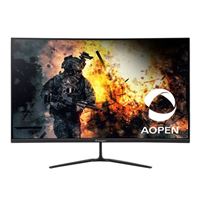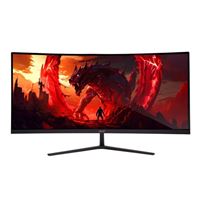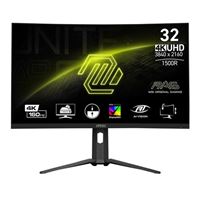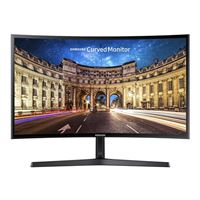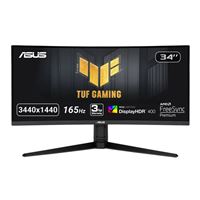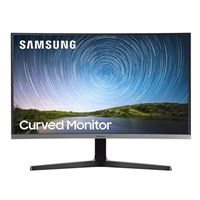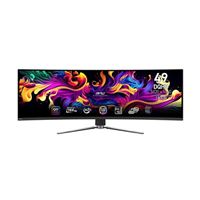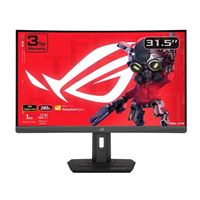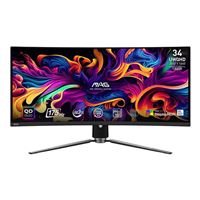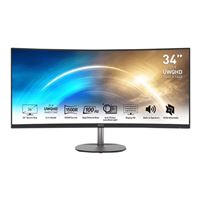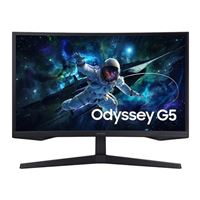Special Offers / Advertisements
Compare up to 4 items
New list of matching products
X
Sorry, you may compare a maximum of 4 items at a time.
Please clear one or more of your compare items before adding another-
SKU: 813055
- Adaptive Sync Compatible
- HDR
- DisplayPort HDMI
- RapidVA
- Console Mode
- Adaptive Sync Compatible
- HDR
- DisplayPort HDMI
10 IN STOCK at Yonkers StoreOur price $179.99Original price $209.99Save $30.00 -
SKU: 620476
- AMD FreeSync Premium Pro
- HDR
- HDMI DisplayPort
- Extreme Low Motion Blur
- ASUS Variable Overdrive
- AMD FreeSync Premium Pro
- HDR
- HDMI DisplayPort
7 IN STOCK at Yonkers StoreOur price $299.99Original price $329.99Save $30.00 -
SKU: 685768
- Adaptive Sync
- HDR
- HDMI DisplayPort Thunderbolt 4
- Ambient Light Sensor
- ComfortView Plus
- Adaptive Sync
- HDR
- HDMI DisplayPort Thunderbolt 4
5 IN STOCK at Yonkers StoreOur price $1,599.99Original price $1,899.99Save $300.00 -
SKU: 828558
- NVIDIA G-Sync Compatible
- HDR
- DisplayPort HDMI USB Type-C
- OLED Care 2.0
- Frameless Design
- NVIDIA G-Sync Compatible
- HDR
- DisplayPort HDMI USB Type-C
1 IN STOCK at Yonkers StoreOur price $999.99Original price $1,299.99Save $300.00 -
SKU: 876326
- Adaptive Sync Compatible
- HDR
- DisplayPort HDMI
- Flicker-Free
- Low Input Lag
- Adaptive Sync Compatible
- HDR
- DisplayPort HDMI
1 IN STOCK at Yonkers StoreOur price $169.99 -
SKU: 857219
- Adaptive Sync Compatible
- HDR
- DisplayPort HDMI USB Type-C
- AI Vision
- Frameless Design
- Adaptive Sync Compatible
- HDR
- DisplayPort HDMI USB Type-C
14 IN STOCK at Yonkers StoreOur price $229.99Original price $249.99Save $20.00 -
SKU: 865808
- AMD FreeSync Premium Compatible
- HDR
- DisplayPort HDMI
- Zero Frame Design
- Acer VisionCare
- AMD FreeSync Premium Compatible
- HDR
- DisplayPort HDMI
1 IN STOCK at Yonkers StoreOur price $279.99 -
SKU: 812529
- AMD FreeSync Premium Compatible
- DisplayPort HDMI
- BlueLight Filter
- ZeroFrame Design
- AMD FreeSync Premium Compatible
- DisplayPort HDMI
- BlueLight Filter
3 IN STOCK at Yonkers StoreOur price $279.99Original price $329.99Save $50.00 -
SKU: 652826
- AMD FreeSync Premium Pro
- HDR
- HDMI DisplayPort
- 1ms(GtG) Response Time
- 1000R Curve
- AMD FreeSync Premium Pro
- HDR
- HDMI DisplayPort
9 IN STOCK at Yonkers StoreOur price $799.99 -
SKU: 812503
- AMD FreeSync Compatible
- DisplayPort HDMI
- BlueLight Filter
- ZeroFrame Design
- AMD FreeSync Compatible
- DisplayPort HDMI
- BlueLight Filter
2 IN STOCK at Yonkers StoreOur price $199.99Original price $229.97Save $29.98 -
SKU: 599472
- AMD FreeSync Premium
- HDR
- HDMI DisplayPort
- ComfyView
- 3-Sided Frameless
- AMD FreeSync Premium
- HDR
- HDMI DisplayPort
2 IN STOCK at Yonkers StoreOur price $299.99Original price $329.99Save $30.00 -
SKU: 841585
- AMD FreeSync Premium Compatible
- HDR
- DisplayPort HDMI
- ZeroFrame Design
- AMD FreeSync Premium Compatible
- HDR
- DisplayPort HDMI
2 IN STOCK at Yonkers StoreOur price $179.99Original price $279.99Save $100.00 -
SKU: 815829
- AMD FreeSync Premium Compatible
- VESA DisplayHDR 400
- HDMI DisplayPort
- Frameless Design
- 1500R Curve
- AMD FreeSync Premium Compatible
- VESA DisplayHDR 400
- HDMI DisplayPort
3 IN STOCK at Yonkers StoreOur price $389.99Original price $449.99Save $60.00 -
SKU: 525428
- AMD FreeSync
- HDR
- VGA HDMI
- Samsung MagicUpscale
- Samsung MagicBright
- AMD FreeSync
- HDR
- VGA HDMI
5 IN STOCK at Yonkers StoreOur price $99.99 -
SKU: 742825
- AMD FreeSync Premium Compatible
- Narrow Bezel Design
- HDMI DisplayPort
- HDR Ready
- AMD FreeSync Premium Compatible
- Narrow Bezel Design
- HDMI DisplayPort
3 IN STOCK at Yonkers StoreOur price $299.99Original price $349.99Save $50.00 -
SKU: 244566
- FreeSync
- HDR
- HDMI DisplayPort
- Low Motion Blur
- FreeSync
- HDR
- HDMI DisplayPort
4 IN STOCK at Yonkers StoreOur price $369.99 -
SKU: 320085
- FreeSync
- HDMI DisplayPort
- 3-Sided Frameless
- Flicker-Free
- FreeSync
- HDMI DisplayPort
- 3-Sided Frameless
1 IN STOCK at Yonkers StoreOur price $279.99Original price $329.99Save $50.00 -
SKU: 438150
- AMD FreeSync
- VGA HDMI
- Flicker-Free
- 3-Sided Borderless
- AMD FreeSync
- VGA HDMI
- Flicker-Free
2 IN STOCK at Yonkers StoreOur price $149.99Original price $179.99Save $30.00 -
SKU: 672535
- Adaptive-Sync
- HDR
- HDMI DisplayPort USB Type-C
- Gaming Intelligence App
- Night Vision Mode
- Adaptive-Sync
- HDR
- HDMI DisplayPort USB Type-C
4 IN STOCK at Yonkers StoreOur price $849.99Original price $1,099.99Save $250.00 -
SKU: 725259
- AMD FreeSync Premium Compatible
- HDMI DisplayPort USB Type-C
- HDR10
- AMD FreeSync Premium Compatible
- HDMI DisplayPort USB Type-C
- HDR10
1 IN STOCK at Yonkers StoreOur price $449.991 open box from $382.96 -
SKU: 672568
- Adaptive-Sync
- HDR
- HDMI DisplayPort USB Type-C
- Gaming Intelligence App
- Night Vision Mode
- Adaptive-Sync
- HDR
- HDMI DisplayPort USB Type-C
2 IN STOCK at Yonkers StoreOur price $699.99Original price $779.99Save $80.00 -
SKU: 670281
- AMD FreeSync Premium Pro
- HDR
- HDMI DisplayPort USB Type-C
- Dashboard
- KVM Switch
- AMD FreeSync Premium Pro
- HDR
- HDMI DisplayPort USB Type-C
2 IN STOCK at Yonkers StoreOur price $1,299.99 -
SKU: 750075
- AMD FreeSync Compatible
- HDMI DisplayPort
- Blue Light Filter
- Anti-Flicker Tech
- AMD FreeSync Compatible
- HDMI DisplayPort
- Blue Light Filter
4 IN STOCK at Yonkers StoreOur price $229.99Original price $299.99Save $70.00 -
SKU: 658971
- AMD FreeSync Premium
- HDR
- HDMI DisplayPort
- Eye Saver Mode
- Auto Source Switch
- AMD FreeSync Premium
- HDR
- HDMI DisplayPort
1 IN STOCK at Yonkers StoreOur price $299.99Original price $349.99Save $50.00
Special Offers / Advertisements
{
'name': 'MAG 274CQF 27" 2K WQHD (2560 x 1440) 180Hz Curved Screen Gaming Monitor',
'id': '691175',
'price': '179.99',
'brand': 'MSI',
'category': 'Computer Monitors|575',
'list': 'Search Results',
'position': 1
},{
'name': 'TUF VG34VQL3A 34" 2K QHD (3440 x 1440) 180Hz Curved Screen Gaming Monitor',
'id': '671893',
'price': '299.99',
'brand': 'ASUS',
'category': 'Computer Monitors|575',
'list': 'Search Results',
'position': 2
},{
'name': 'U4025QW 39.7" 5K WQHD (5120 x 2160) 120Hz Wide Curved Screen Monitor',
'id': '678791',
'price': '1,599.99',
'brand': 'Dell',
'category': 'Computer Monitors|575',
'list': 'Search Results',
'position': 3
},{
'name': 'MPG 491CQPX QD-OLED 49" 5K Dual QHD (5120 x 1440) 240Hz UltraWide Gaming Monitor',
'id': '692387',
'price': '999.99',
'brand': 'MSI',
'category': 'Computer Monitors|575',
'list': 'Search Results',
'position': 4
},{
'name': 'CQ27G4X 27" 2K WQHD (2560 x 1440) 180Hz Curved Screen Gaming Monitor',
'id': '696560',
'price': '169.99',
'brand': 'AOC',
'category': 'Computer Monitors|575',
'list': 'Search Results',
'position': 5
},{
'name': 'MAG 325CQF 31.5" 2K WQHD (2560 x 1440) 180Hz Curved Screen Gaming Monitor',
'id': '694934',
'price': '229.99',
'brand': 'MSI',
'category': 'Computer Monitors|575',
'list': 'Search Results',
'position': 6
},{
'name': 'Nitro ED323QU Z1bmiipx 31.5" 2K WQHD (2560 x 1440) 280Hz Curved Screen Gaming Monitor',
'id': '695666',
'price': '279.99',
'brand': 'Acer',
'category': 'Computer Monitors|575',
'list': 'Search Results',
'position': 7
},{
'name': '34HC5CU S3bmiiphx 34" 2K WQHD (3440 x 1440) 180Hz Curved Gaming Ultrawide Monitor',
'id': '691085',
'price': '279.99',
'brand': 'AOpen',
'category': 'Computer Monitors|575',
'list': 'Search Results',
'position': 8
},{
'name': 'Odyssey S32BG65 31.5" 2K WQHD (2560 x 1440) 240Hz Curved Wide Screen Gaming Monitor',
'id': '675319',
'price': '799.99',
'brand': 'Samsung',
'category': 'Computer Monitors|575',
'list': 'Search Results',
'position': 9
},{
'name': '32HC5QU S3biiphx 31.5" 2K WQHD (2560 x 1440) 180Hz Gaming Monitor',
'id': '691084',
'price': '199.99',
'brand': 'AOpen',
'category': 'Computer Monitors|575',
'list': 'Search Results',
'position': 10
},{
'name': 'XZ342CU 34" QHD (3440 x 1440) 180Hz Curved Screen Monitor',
'id': '669408',
'price': '299.99',
'brand': 'Acer',
'category': 'Computer Monitors|575',
'list': 'Search Results',
'position': 11
},{
'name': 'Nitro ED306C Xbmiippx 29.5" UWFHD (2560 x 1080) 200Hz UltraWide Gaming Monitor',
'id': '693432',
'price': '179.99',
'brand': 'Acer',
'category': 'Computer Monitors|575',
'list': 'Search Results',
'position': 12
},{
'name': 'MAG 321CUP 31.5" 4K UHD (3840 x 2160) 160Hz Curved Screen Gaming Monitor',
'id': '691485',
'price': '389.99',
'brand': 'MSI',
'category': 'Computer Monitors|575',
'list': 'Search Results',
'position': 13
},{
'name': 'C27F396FH Essential 26.95" Full HD (1920 x 1080) 60Hz LED Curved Screen Monitor (Refurbished)',
'id': '661474',
'price': '99.99',
'brand': 'Samsung',
'category': 'Computer Monitors|575',
'list': 'Search Results',
'position': 14
},{
'name': 'MAG 345CQR 34" UWQHD (3440 x 1440) 180Hz UltraWide Gaming Monitor',
'id': '683831',
'price': '299.99',
'brand': 'MSI',
'category': 'Computer Monitors|575',
'list': 'Search Results',
'position': 15
},{
'name': 'VG34VQL1B 34" 2K UWQHD (3440 x 1440) 165Hz UltraWide Curved Screen Gaming Monitor',
'id': '634871',
'price': '369.99',
'brand': 'ASUS',
'category': 'Computer Monitors|575',
'list': 'Search Results',
'position': 16
},{
'name': 'S3222DGM 32" 2K QHD (2560 x 1440) 165Hz Curved Screen Gaming Monitor',
'id': '641483',
'price': '279.99',
'brand': 'Dell',
'category': 'Computer Monitors|575',
'list': 'Search Results',
'position': 17
},{
'name': 'LC32R500FH 31.5" Full HD (1920 x 1080) 75Hz Curved Screen Monitor (Refurbished)',
'id': '652907',
'price': '149.99',
'brand': 'Samsung',
'category': 'Computer Monitors|575',
'list': 'Search Results',
'position': 18
},{
'name': 'MPG 491CQP 48.9" 2K QHD (5120 x 1440) 144Hz Wide Curved Screen Gaming Monitor',
'id': '677553',
'price': '849.99',
'brand': 'MSI',
'category': 'Computer Monitors|575',
'list': 'Search Results',
'position': 19
},{
'name': 'ROG Strix XG32WCMS 32" QHD (2560 x 1440) 280Hz VA Curved Gaming Monitor',
'id': '682541',
'price': '449.99',
'brand': 'ASUS',
'category': 'Computer Monitors|575',
'list': 'Search Results',
'position': 20
},{
'name': 'MAG 341CQP 34.18" 2K QHD (3440 x 1440) 175Hz Wide Screen Monitor',
'id': '677554',
'price': '699.99',
'brand': 'MSI',
'category': 'Computer Monitors|575',
'list': 'Search Results',
'position': 21
},{
'name': 'AORUS CO49DQ SA 49" 5K WQHD (5120 x 1440) 144Hz Ultrawide Curved Screen Gaming Monitor',
'id': '677011',
'price': '1,299.99',
'brand': 'Gigabyte',
'category': 'Computer Monitors|575',
'list': 'Search Results',
'position': 22
},{
'name': 'Pro MP341CQ 34" UWQHD (3440 x 1440) 100Hz Curved Gaming Monitor',
'id': '685065',
'price': '229.99',
'brand': 'MSI',
'category': 'Computer Monitors|575',
'list': 'Search Results',
'position': 23
},{
'name': 'Odyssey G5 S32CG55 32" 2K WQHD (2560 x 1440) 165Hz Wide Curved Screen Gaming Monitor',
'id': '676013',
'price': '299.99',
'brand': 'Samsung',
'category': 'Computer Monitors|575',
'list': 'Search Results',
'position': 24
}
{'id': 'Tower',
'name': 'Nanoleaf Monitor Tower October 2021',
'creative': 'https://60a99bedadae98078522-a9b6cded92292ef3bace063619038eb1.ssl.cf2.rackcdn.com/images_ads_2021Search_October_nanoleaf_shapes_tower.png',
'position': '1' },{'id': 'Tower',
'name': 'Kanto Monitor Tower January 2020',
'creative': 'https://60a99bedadae98078522-a9b6cded92292ef3bace063619038eb1.ssl.cf2.rackcdn.com/images_ads_2021Search_October_KantoDMS2000st.png',
'position': '2' },{'id': 'Tower',
'name': 'Micro Center eNews Banner',
'creative': 'https://60a99bedadae98078522-a9b6cded92292ef3bace063619038eb1.ssl.cf2.rackcdn.com/webp_MCNewsST.webp',
'position': '3' }





